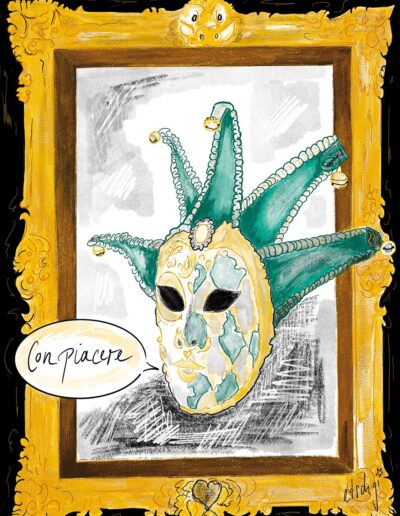Negative headlines like “NFT’s are Dead!” abound and confusion remains about Web3. However, amidst the noise, there is immense potential for NFTs and the continued tokenization of real-world assets to contribute to the “Economy of Kindness”; one that prioritizes not just Profit but also People and Planet.
In the rapidly evolving world of Web3, artists can revolutionize the way their work is launched, distributed, and valued using NFTs. By combining traditional art distinctiveness with blockchain technology, NFTs represent a momentous change in the art industry.
The first step for artists is to create a digital version of their work, also called tokenization, that unlocks new horizons, allowing their creation to instantly transcend physical boundaries and reach a global audience. The unique nature of NFTs ensures that each digital artwork is a one-of-a-kind asset, verifiable via blockchain adding a layer of authenticity and rarity to the physical piece of art.
The tokenization of art through NFTs also introduces a new economic model. Artists can keep more control over their work, bypassing traditional intermediaries like galleries or auction houses. This direct-to-consumer approach maximizes profits and fosters a closer relationship between artists and their audience.
Also, NFT marketplaces often enable royalty mechanisms, where artists earn a percentage of sales whenever their work is resold. This perpetual income model is a meaningful change, ensuring artists to continue profiting from the increasing value of their work. NFTs can also be a loyalty card, rewarding a brand’s fans for their engagement and loyalty, but many are not aware of such an application.
For example, Scarlet Johanson and Selena Gomez are using these innovative tools to deepen their connection with their most enthusiastic community members and fans. Community members can have direct access to both founders, contribute to the brand by making UGC (user-generated content), supply product feedback and share reviews. In return, participants earn rewards redeemed for benefits on the brand’s website.
Such community engagement is also rewarding for brands who achieve up to 2.2x higher purchasing frequency and 23% higher lifetime revenue from such loyalty program members, compared to nonmembers. Although such tools offer the usual user experience without any crypto wallet integrations and seed phrases, we are seeing Web3 ethos being integrated: founders and creators are investing time to engage directly with community members; community members are being rewarded for their engagement; and earned rewards are owned and can be transferred to others.
NFTs, or tokens, can also play a crucial role in addressing environmental concerns, such as reducing carbon emissions: carbon credits are perfect examples of how NFTs can enforce Sustainable Development Goals (SDGs).
The traditional carbon credit markets face challenges with transparency, accessibility, and liquidity. Tokenization offers a solution by providing transparency and traceability of emissions reductions. By logging project data directly on the blockchain, carbon credits become auditable and accessible to a broader range of participants. It also allows fractional ownership as credits are divided into smaller tradable units.
For example, PowerLedger, a blockchain-based energy trading platform for decentralized peer-to-peer transactions, enables the buying and selling of excess renewable energy directly between consumers, promoting sustainability and empowering individuals to participate in a more efficient and transparent energy market.
The potential future impact is significant. Tokenizing carbon credits unlocks not only transparency but also fair pricing, and direct connections between suppliers, buyers, and investors.
These examples are but the beginnings of how NFTs and other tokenization will positively affect our world. We must continue to educate ourselves on these new developments; to be aware of possible pitfalls but more to recognize the untapped wealth of transformative benefits that have the power to reshape most industries. Increasing uses of NFTs can help propagate a growing “Economy of Kindness” empowering creators, enhancing customer experiences while increasing profits, and contributing to a more sustainable planet. Long live NFTs!
Authors:
- Alysa Kodisch: Venture Consultant supporting entrepreneurs in Web3, Commercial Partnerships Lead Women in Web3 Switzerland, Chair 100 Women Finance, Zurich
- Janina Vinklere: Cofounder and Growth Lead Vividly.space and Exclusible Ambassador; Top 100 Women in Emerging Tech (womenofthefuture.com/global-vol-2/) by Women of The Future (womenofthefuture.com)
- Kamila Michalkiewicz: Co-Founder of laminar creations, member at Women in Web3 Switzerland, architect
- Kinga Pilat: Head of Partnerships at Women in Web3 Switzerland, Lead of Fintech Ecosystem Growth at SFTA, Business Strategist and Consultant.

Women in Web3 Switzerland (WiW3CH) is an association dedicated to creating a strong community for women in Web3, to increase the strength, voice and visibility of female experts in the space. It is an association driven to bring more women into Web3 by creating communities for greater inclusion and visibility.




























